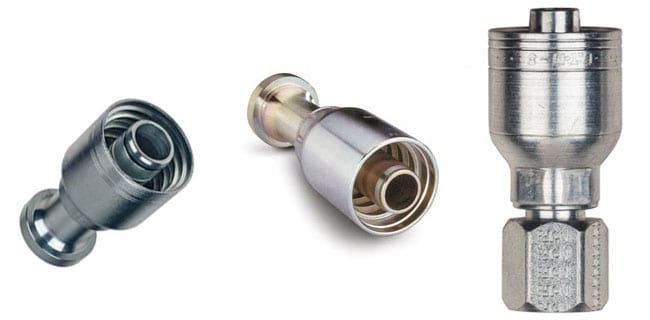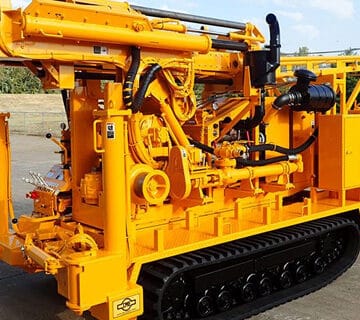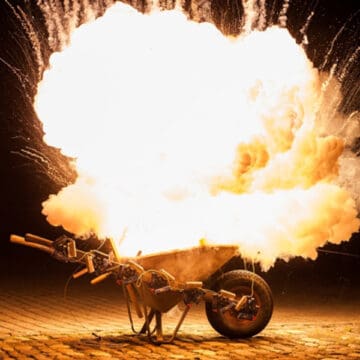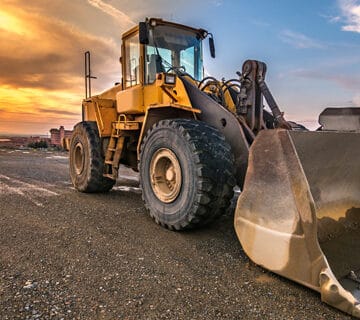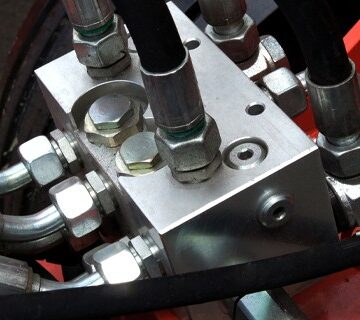What is a hydraulic hose end connection?
A hydraulic hose end connection generally refers to the crimp style on fittings at the ends of a hose. The crimp fitting works exactly how it sounds. The end connection is crimped onto the hose, allowing secure connections to other components. Sounds simple enough, but it’s important to remember that these areas are the weakest link in your hose assembly. To avoid potentially dangerous and expensive leaks, we recommend keeping a few things in mind when designing your hose assembly. They are:
- Fluid compatibility
- Safety considerations
- Temperature and pressure ratings
- Installation design
- Hose size
- Corrosion requirements
Having this information is essential to choosing a corresponding end connection. Since most leaks occur at this connection, it’s important to select the right end connection and connection method that will reduce the likelihood of leak points.
Because of the sheer number of hydraulic hose assembly options that exist, we recommended having a knowledgeable sales professional visit the worksite, assess the situation and offer solutions designed specifically for that application.
Contact us today to discuss your needs or to schedule an onsite consultation at 314-638-6500 option 4.
Tips for Choosing the Right Hydraulic Hose End Connection
With so many options and applications out there, choosing the right hose end connection or coupling for your industrial hose needs can be challenging. Making the wrong decision can impact operations and put others’ safety at risk. For instance, when the wrong connectors are used in a hydraulic hose configuration, the result can be hose leakage, bursting or other catastrophic failure. Considering these hoses often convey various materials such as chemicals or other dangerous fluids, the impact on human life and property can be devastating.
Fortunately, many hoses and their fittings have been designed as part of a complete hose assembly system. The most important thing to consider is to never try to mismatch different brands of hoses and hose ends. Different manufacturers use different crimp specifications designed to create the best seal possible. To get a proper reading of your crimp diameters, you can follow these 3 tips from Eaton Weatherhead.
- Measure the diameter in the middle of the crimped portion of the hose end
- Place the caliper or micrometer in a position that allows measurement across the pressed portion of the crimp
- See crimp diameters on the Hose End & Tool Selector Chart
Mixing and matching components that are not engineered and designed for each other is not recommended and can degrade the effectiveness of the connection leading to failure or injury. When selecting a hose end connection type, we have a few simple reminders.
1. Consider Industry Standards
Hydraulic hose construction and performance is governed by national and international standards that provide general, dimensional and performance specifications for hydraulic hose systems. They are ISO, BSI, SAE, DIN, API and CETOP. The SAE standard is the most common standard in the United States.
For more information on hydraulic hose standards, read Making Sense of Hydraulic Hose Standards.
2. Consider Hose Requirements
Depending on the application, your hose assembly can be up against several different variables that can affect its performance and safety. Consider the permeation and chemical compatibility, pressure and temperature rating needs of the application. Then, select the core tube material, reinforcement layer and hose cover that meet those needs. To do so, you must ask yourself these questions:
- What is the material to be conveyed?
- How far must the material travel?
- How fast must the material travel?
- Is the material to be conveyed dangerous or toxic?
Your hose should be selected based on the internal and external hose requirements for the specific application. Heat, pressure, bend radius, abrasion-resistance and weather conditions are just a few examples of these internal and external needs. Then, choose hose ends that are compatible with your hose selection.
3. Consider System Specifications
Every component in your hose assembly must be compatible and work in harmony for the best performance. The type of material being conveyed through the hose assembly and its frequency will impact how often hose ends will need to be replaced. Choosing quality hose ends instead of cheaper economic ones may increase up-front costs, but will pay dividends over the long haul with better hose maintenance, less replacement and less downtime.
Related: Choose the Right Hydraulic Fittings Using the STAMPED Method
Contact us today to discuss your needs or to schedule an onsite consultation at 314-638-6500 option 4.
Superior Industrial Supply carries the hydraulic hose supplies and industrial tools you need to keep your operations running smoothly. If we can’t get you what you need, we’ll help you find it. Stop in to our St. Louis location, or call 800-783-6501 and we’ll get you squared away today.

